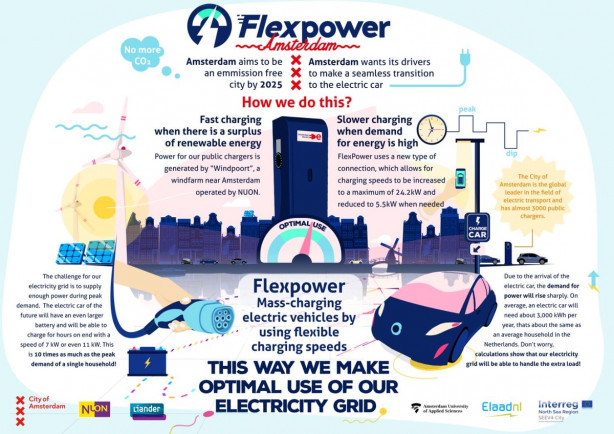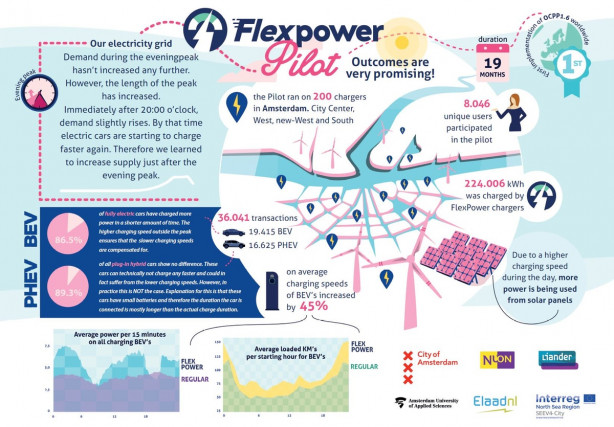Stay in the know on all smart updates of your favorite topics.
Mobility Challenge: How do we make Carbon-neutral mobility to large events the norm?

The climate is changing and Amsterdam is getting busier and busier. We are faced with the task of keeping the city, including Southeast, liveable, safe and accessible at the same time.Various events, concerts, sports competitions attract millions of visitors to Southeast every year. To bring all these visitors to the city in a more sustainable way, the municipality of Amsterdam, Johan Cruijff ArenA, Ajax, NS, GVB, Transdev, Transport Region Amsterdam and Amsterdam Smart City have joined forces. Their ambition is to make CO2 neutral travelling to and from large events the norm by the end of 2023.
Alternating travelbehaviour requires a diverse coalition
The car is currently still the most widely used means of transport in Southeast. The transition to sustainable mobility requires cooperation between (semi)public and private parties and the strengthening of sustainable alternatives to the private car. While reducing car- and parking accessibility, and placing bycicle parking options lays within the power of the municipality, the public transport providers posess all travel data and have the power to expand their transportcapacity. Moreover, to convince the supporters and fans to change their behaviour, you need the direct communication power from Ajax (Football Club) and the Johan Cruijff ArenA. Hence, you could say the challenge within the challenge is to find new forms of collaboration, data sharing, and fine-tuning the alignment of measures.
Short and long-term measures
The coalition of partners have developed an action plan and analysed crowd-and travel behaviour. During 2023, these findings initiated the shaping of first measures to influence the mobility choices of visitors. During the first pilot event at the end of May, bike parking facilities will be expanded and group transportation will be aranged for those living in so called 'public transport desserts'.
When speaking of long(er)-term measures, one could think of time-adjusted public transport supply, personal (digital) travel advice, and campaigns through Ajax and its supportersbase to raise awareness and appreciation of car-alternatives.
Open Database of Bicycle Infrastructure Manuals

500+ cycling infrastructure documents from all over the world, and growing. Cycling infrastructure design manuals, strategy guides and more all curated in one easy-to-use database.
How can parametric analysis optimise urban design of Schinkelkwartier - the best masterplan in the Netherlands in 2021

On Thursday, March 17 Grisha Zotov pitched some of the dilemmas his team encountered during the process of urban design. Among others, he touched upon densification and building height as aspects that influence intensity of human interaction.
Located in the former industrial zone, Schinkelkwartier is an example of inclusive and interdisciplinary redevelopment. Destined to be a diverse mix-use hub, Schinkelkwartier will develop in several phases during 25 years. At an early stage local stakeholders and neighbors of the area were involved.
On behalf of Architectural Prescription Grisha raised questions about opportunities and risks offered by water-related location and complexity due to the amount of interested parties.
Suggestions, ideas and feedback are always welcome.
Local or guest, reach out and share what you think!
Code the Streets - Creating innovative solutions for sustainable, inclusive and safe mobility.

As Amsterdam’s metropolitan area continues to grow, so do traffic related issues such as congestion, crowded streets, and increasing pressures on fragile infrastructures. Just like cities worldwide, the City of Amsterdam is faced with the challenge of finding better ways to manage urban mobility. Code the Streets wants to support cities with this challenge by bringing together cities, mobility providers and science to create sustainable and inclusive mobility solutions that keep cities liveable, now and in the future.
Code the Streets is working on improving an already existing navigation app by adding data about school zones, fragile infrastructures, congestion and pollution. We want to stimulate car-users to choose an alternative route, for example one that avoids school zones or vulnerable city infrastructure. That way we work to towards a more sustainable way of driving and make the streets of Amsterdam safer and less crowded. Starting in autumn, we will be running pilot programs testing the application in Amsterdam. Interested in trying the app? Sign up here.
Code the Streets is an European EIT Urban Mobility Project bringing together partners from Amsterdam, Helsinki and Budapest to work on innovative solutions for sustainable, inclusive and safe mobility.
Note from ASC: What do you think? Let’s hear it in the comments!
Operationeel Mobiliteitscentrum (OMC)

In de toekomst zullen we ons anders door de stad moeten bewegen. Vanwege de toenemende drukte en de verduurzamingsopgave zullen we minder afhankelijk moeten worden van onze privéauto. Dit betekent meer fietsen, meer met het openbaar vervoer en meer gebruik van nieuwe vormen van vervoer zoals deelmobiliteit. Om deze mobiliteitstransitie te kunnen faciliteren moet de gemeente ook haar rol als wegbeheerder herzien. De huidige verkeerscentrale is namelijk nog vooral gericht op klassiek wegverkeer en kijkt dus niet naar de verschillende mobiliteitsstromen. Daarom testen we in Amsterdam Zuidoost met een nieuwe mobiliteitscentrale die naar alle verschillende mobiliteitsstromen kijkt.
Wicked Problems
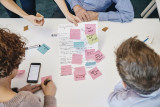
Te wicked? Niet voor ons.
Wij werken allemaal aan urgente, complexe, maatschappelijke uitdagingen. Issues die schier onoplosbaar lijken, van dilemma’s en paradoxen omgeven, nog niet duidelijk hoe het moet. Wel is duidelijk dát het moet, dat we elkaar nodig
hebben en dat we er NU aan moeten beginnen. Om met de woorden van Jan Rotmans te spreken; we leven niet in een tijdperk van verandering maar in een verandering van tijdperk. En hier hoort een nieuwe gereedschapskist bij.
En of je nou aan energietransitie werkt, andere mobiliteitssystemen, creëren van waterstofhubs, peer to peer autodeelsystemen, het maakt niet uit, we zien dat al deze opgaven op enig moment tegen gelijksoortige barrières aanlopen. Op samenwerking, financiering, privacy, onvoldoende aansluiting op de maatschappij, om maar een paar voorbeelden te noemen.
Unieke samenwerking
Als Amsterdam Smart City netwerk willen en kunnen we deze opgaven niet laten liggen. Door het bundelen van onze kennis en expertise kunnen we als netwerk iets unieks bieden en de wil en durf tonen om deze barrières te doorbreken. De betrokken partners die dit uitdenken en begeleiden zijn RHDHV, Kennisland, Drift, NEMO, Arcadis, Alliander, HvA en Metabolic. Zij bundelen hun expertise en ervaring om de echte vragen boven tafel te krijgen, tot nieuwe manieren van samenwerken te komen en barrières te doorbreken. We richten ons met name op de start van de samenwerking. Gezamenlijk ontwikkelen we een ‘wicked problem aanpak’. Op een nieuwe manier, lerend door te doen, exploratief.
Waar moet je aan denken?
Wat is eigenlijk het echte probleem? Wiens probleem is dit? Hoe kijken anderen er tegenaan? Welke andere partijen lijken nodig? Hoe vind je ze? Hoe ga je om met eigenaarschap en botsende frames? Hoe zorg je dat je al in
een vroeg stadium de maatschappij (bewoners, ondernemers, werknemers, etc) betrekt en hun ervaringen in het project trekt? Het wicked problem team zet nieuwe methoden in voor het beantwoorden van deze vragen. En het creëren van de benodigde commitment om het vraagstuk aan te pakken. Niets staat van te voren vast, want we passen ons aan aan wat we tegenkomen. Met elkaar ontwikkelen we een nieuwe aanpak om de barrières te doorbreken.
CityFlows
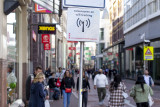
Innovating Crowd Management Practice
Schijnerg Group

Creating the next-generation renewable energy digital platform, focusing on machine learning-based consulting and sustainable community. Additionally, it provides engineering consultancy which is 100% digital through machine learning optimization. Furthermore, it also transforms the data to solve unique to our client need and it embarks a lifelong companion for clients to grow from installation to decommissioning.
Bees Digital Farm

Ever since the 20th century most of the countries across the globe are still using the traditional way of farming and it’s still going on for the demand and supply of people. As we all know that by the year 2050, the 80 % estimation of the world population will have been living in urban areas which can lead the total population of the world to increase by 3 billion people. With this large amount of increase in population, scientists and researchers are quite worried about the farmland which will be required to generate such a huge demand for food supply to fulfill the necessity to survive. Noticing this fact in mind as what would be the future source of alternative solutions to solve such a type of problem a concept was proposed named “In-House Farming”.
enerGQmobility

Founded in 2014, enerGQmobility develops and markets low cost self-learning energy management systems to the full range of organizations from households to multinationals in all sectors of the market. Our aim is to contribute to “stop the global warming” within 5 years by licensing the technology to partners. It uses the low cost and energy saving technology to assess the performance and provide improvements in the areas of aviation, maritime, rail, and road transport.
The self-learning energy management systems of enerGQmobility make use of AI-techniques and visualize excess energy so that it can be reduced easily.
EyeBeacons: Wayfinding in Public Spaces

Navigating from A to B is an essential part of our daily lives.
Unknown routes, busy places and unexpected obstacles are a big challenge for everyone, regardless of what your eyesight is. For people with a visual impairment, this process is primarily a task because they have limited use of spatial orientation and directions in the environment. The EyeBeacons project investigated how new technologies can support people with a visual impairment when navigating through the city.
For more information you can get in contact with Joey van der Bie, researcher at the Digital Life Centre of the Amsterdam University of Applied Sciences. Follow this link for further details.
StreetSense

StreetSense is an IoT street sensor designed to take every street online. This nifty device not only counts passing vehicles, but also tells you if the street surface is dry, wet, overheating, frozen or gritted. Because StreetSense is self-powered and easy to install it is very economic to operate. Every street online with StreetSense!
Interested? Reach out to us to learn more about StreetSense and our other exciting smart city products.
RESILIO - Amsterdam Blue Green Roofs

The EU-UIA funded the programme RESILIO, a project that aims to realize 10.000 square meters of blue-green roofs in four city districts in Amsterdam. The consortium of both public and private partners aims to build an interconnected network of smart roofs, in which sensors and state-of-the-art equipment enable micro-water management on rooftops. This contributes to urban climate adaption and resilience, and can potentially evolve into a scalable solution for water management on rooftops.
This project is co-financed by the European Regional Development Fund through the Urban Innovative Actions Initiative.
Smart Public Lighting in municipality of Renkum

The municipality of Renkum wants to switch to smart public lighting throughout the municipality and at the same time build an infrastructure for future Smart City applications, preferably with as few investments as possible. In response to this wish, Luminext (smart lighting), CityTec (service partner) and Primevest Capital Partners (financing) started a partnership to make this project possible.
Kevin Groen, project leader for the municipality of Renkum: “We have been busy in recent years for the tender for new public lighting. We are in need of replacement; our area is outdated and some lampposts are about to fall over. So we cannot wait until the first lampposts are replaced. We are looking forward to a great collaboration in a unique tender form!”
More information:
Please contact Mirjam Endendijk, Manager Marketing & Communications Luminext: <a>mirjamendendijk@luminext.eu</a>
Program Smart Mobility Amsterdam 2019 - 2025

An accessible, liveable and less polluted city: this is what we’d like to achieve for residents, visitors and businesses in Amsterdam today and for future generations. Smarter and cleaner mobility can help us realise these aims. As a city, we want to offer Amsterdammers, commuters and visitors alternatives to the present forms of mobility, providing a door-to-door solution and contributing to our aims. This includes shared electric transport, from cars to bikes, in ‘Neighbourhood eHubs’ (eBuurthubs) established in cooperation with local residents. That way, we can use clean modes of transport and create more space in the city by sharing. We can then use this extra space to improve liveability.
More info and link to the program via www.amsterdam.nl/smartmobility
Check the report:
https://www.amsterdam.nl/wonen-leefomgeving/innovatie/smart-mobility
Actions
To achieve the ambitions, we will start working with two program lines:
1. Data and digitization
This program line helps the municipal organization digital tools and skills to ensure sufficient control in the future be able to rely on mobility in the city and around
improve quality in public spaces. We are working towards a mobility center of the
future. For this we will use the take the following steps:
• A shared basis: building a strong one data position
• A level playing field: frameworks
• Learning by doing: from traffic management to mobility management
• Ready for the future: aware of the consequences of digitization of mobility
2. Innovative mobility solutions
In this program we work together on concrete smart and clean alternatives to transport, so that Amsterdammers and visitors to the city are less dependent on their own car. We do this by setting up projects in certain urban areas and for specific target groups. We also focus on smart city logistics and we explore the possibilities of transport by water and air. Special attention is given to vulnerable groups and Amsterdam residents with a small grant. We improve the range of new affordable mobility concepts and increase demand, we grow into smart mobility city number 1 with a better and accessible mobility system for everyone. For this we will include the following in this program:
• Smart organization of mobility in the city: travelers are working on alternatives to possessing cars and initiating behavioral change.
• Smart fitting and efficient deployment of new mobility solutions: creating space for new concepts in the city and scaling up
• Anticipate on technological innovations: insights into new opportunities and collaborations. The report contains an overview of the various projects started in the previous program that are still running and newly started activities.
Re-store

In the research project Re-store knowledge is developed how to assess the impact of solutions to process organic waste. What indicators are most important and how will it be possible to measure those.
In order to ensure that there is enough food, materials and energy for everyone in 2050, our economy must become circular. There is no more waste in a circular economy - waste is raw material. Based on this vision, the AUAS works on knowledge development about circular products and processes. The Re-Organize project investigated how organic waste in urban agriculture areas can be reused locally using new solutions. Examples include local bio-fermentation, composting and insect breeding. The new Re-StORe project will extend the scope of urban agriculture research into the built environment.
Would you like to know more about the project or would you like to get involved, please contact Maarten Mulder, projectmanager of Re-store, m.mulder3@hva.nl
Pavnext - technological pavements
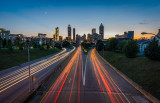
Pavnext´s solution consists of a road pavement equipment that allows kinetic energy to be extracted from vehicles and consequently reduce their motion speed without any action of the driver and without impacting the vehicle, thus promoting road safety at locations where it is required to circulate at low speed. The energy captured is then converted into electrical energy, which is produced without associated emissions and can be used in public street lighting, crosswalks, sensors, traffic lights, charging electric bicycles or even injected into the power grid. Additionally, Pavnext also provides real-time data regarding traffic and velocity, as well as generated and consumed energy, which are sent to the cloud and later used to generate reports and to optimize energy consumption in real time, promoting energy efficiency.
We are looking for new international partners that are interested in implementing pilot plants with us, to help us validate our product and reach TRL9. Please don´t hesitate to contact us if you´re interested.
Prevent noise nuisance from a youth hangout
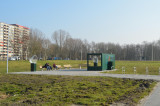
Noise pollution is one of the biggest social problems in densely populated areas. To monitor and solve noise pollution problems in cities SensorTeam developed a novel automated platform and sound sensor for distributed noise measurements.
In a partnership with the city of Amstelveen we have installed a professional audio system in a hangout at the Zetterij in Amstelveen. We use wireless sensors to measure the sound level (dB) produced around this meeting place to avoid public nuisance.
These sensors are placed in the area around the hangout. Maximum sound levels can be remotely monitored and adjusted from SensorTeam’s cloud platform.
In this smart city project the city of Amstelveen gives substance to the local youth’s wish to play music at their own hangout.
About the technique
SensorTeam’s sound level meter is solar powered and is using low power network (LoRa) communication for realtime cloud monitoring. Measurements are accurate and independent and are displayed on SensorTeam’s cloud dashboard. To visualise the recorded data (sound levels) the varying decibels are represented on a coloured map, using inverse distance weighted technique.
LoRa Sound Sensor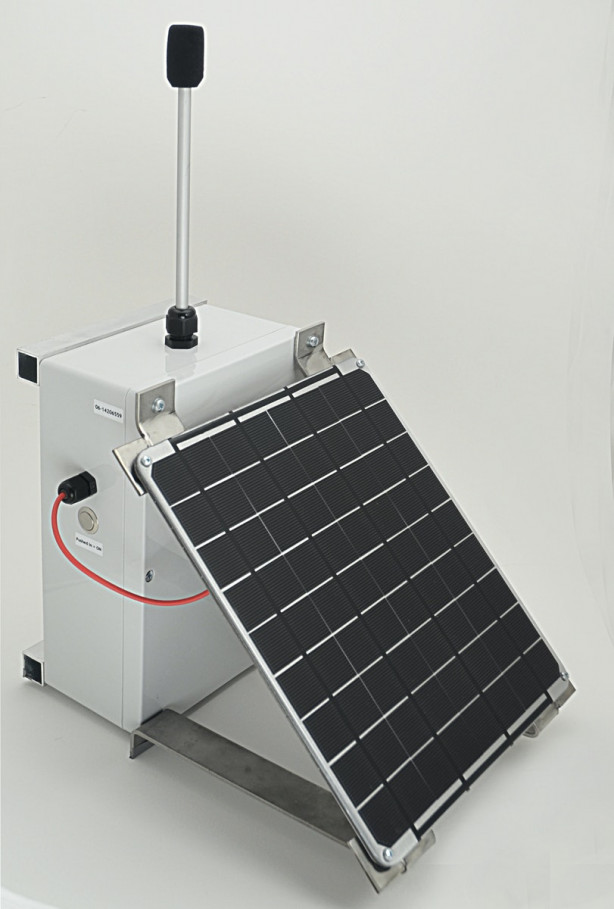
SensorTeam IoT Dashboard
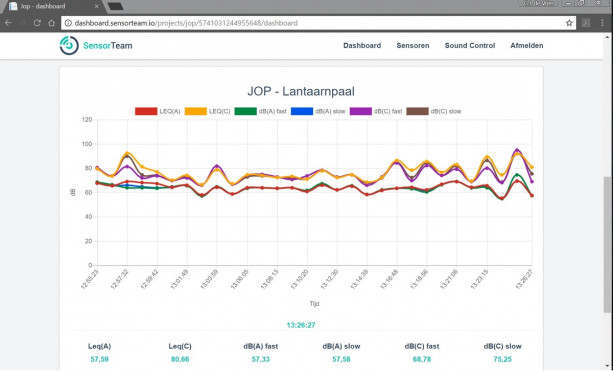
Stay up to date
Get notified about new updates, opportunities or events that match your interests.


